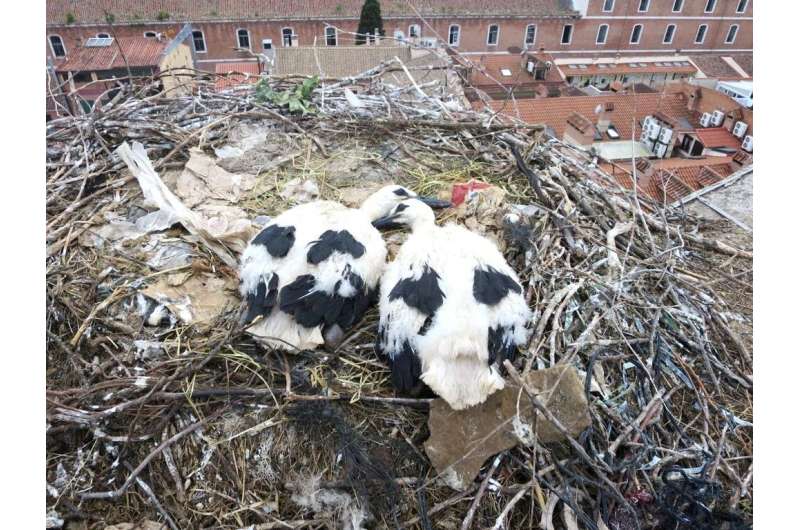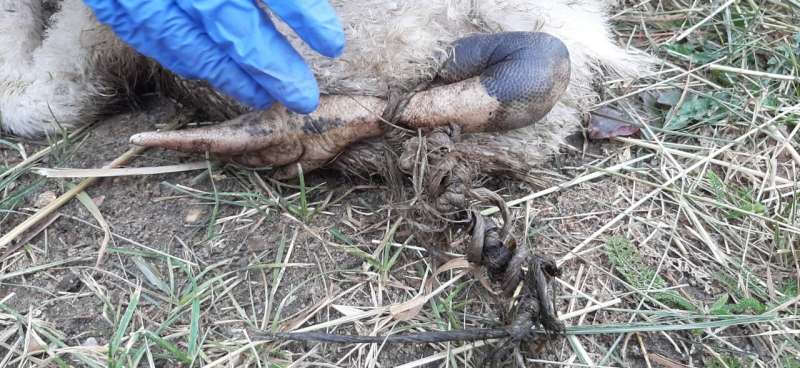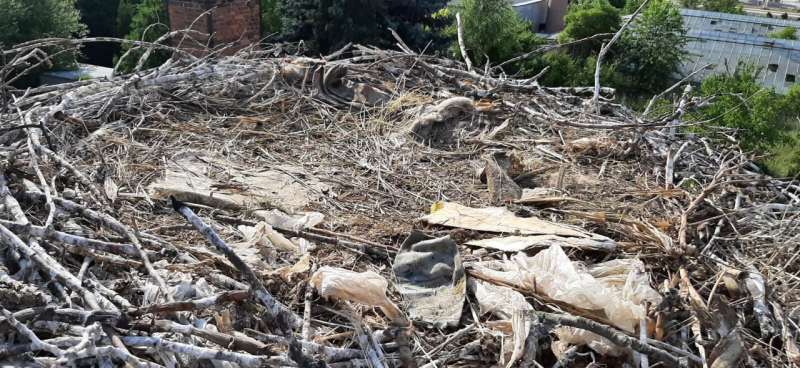
We all discard a huge amount of plastic and other man-made materials into the environment, and these are often picked up by birds. New research has shown that 176 bird species around the world are now known to include a wide range of anthropogenic materials in their nests.
All over the world, birds are using our left-over or discarded materials. Seabirds in Australia incorporate fishing nets into their nests, ospreys in North America include baler twine, birds living in cities in South America add cigarette butts, and common blackbirds in Europe pick up plastic bags to add to their nests.
This material found in birds' nests can be beneficial say researchers. For example, cigarette butts retain nicotine and other compounds that repel ectoparasites that attach themselves to nestling bird's skin and suck blood from them. Meanwhile, there are suggestions that harder man-made materials may help to provide structural support for birds' nests, while plastic films could help provide insulation and keep offspring warm. Despite such potential benefits, it is important to remember that such anthropogenic material can also be harmful to birds.
This research was published in a special issue of the Philosophical Transactions of the Royal Society B on "The evolutionary ecology of nests: a cross-taxon approach." The special issue was jointly organized by Mark Mainwaring, a Lecturer in Global Change Biology in the School of Natural Sciences at Bangor University.

Mark Mainwaring said, "The special issue highlights that the nests of a wide range of taxa—from birds to mammals to fish to reptiles—allow them to adapt to human-induced pressures. Those pressures range from the inclusion of anthropogenic materials into their nests through to providing parents and offspring with a place to protect themselves from increasingly hot temperatures in a changing climate."
Anthropogenic materials sometimes harm birds. Parents and offspring sometimes become fatally entangled in baler twine. Meanwhile, offspring sometimes ingest anthropogenic material after mistaking it for natural prey items. Finally, the inclusion of colorful anthropogenic materials into nests attracts predators to those nests who then prey upon the eggs or nestlings. This means that we need to reduce the amount of plastic and other anthropogenic material that we discard.
The lead author of the study, Zuzanna Jagiełło who is based at the Poznań University of Life Sciences in Poland, added, "A wide variety of bird species included anthropogenic materials into their nests. This is worrying because it is becoming increasingly apparent that such materials can harm nestlings and even adult birds."
Jagiełło also went on to say that "more studies are needed to gain a more complete understanding of how many bird species worldwide include such materials into their nests for us to fully comprehend the extent of the problem."

The second author of the study, Jim Reynolds, a researcher in the Centre for Ornithology at the University of Birmingham in the UK, remarked, "In a rapidly urbanizing world which we share with many different animal taxa, it is not surprising that birds use our discarded materials in their nests. Although much needs to be understood about how plastics, for example, impact birds, it is exciting that birds, through their high mobility and breeding biology, may prove to be potent biomonitors of environmental anthropogenic material pollution."
More information: Zuzanna Jagiełło et al, Why do some bird species incorporate more anthropogenic materials into their nests than others?, Philosophical Transactions of the Royal Society B Biological Sciences (2023). DOI: 10.1098/rstb.2022.0156
Provided by Bangor University
Citation: Man-made materials in nests can bring both risks and benefits for birds (2023, July 9) retrieved 9 July 2023 from https://ift.tt/QDbxqNV
This document is subject to copyright. Apart from any fair dealing for the purpose of private study or research, no part may be reproduced without the written permission. The content is provided for information purposes only.
"bird" - Google News
July 10, 2023 at 06:00AM
https://ift.tt/2kYdpuQ
Man-made materials in nests can bring both risks and benefits for birds - Phys.org
"bird" - Google News
https://ift.tt/XYTkaAt
https://ift.tt/rb370wm
Bagikan Berita Ini














0 Response to "Man-made materials in nests can bring both risks and benefits for birds - Phys.org"
Post a Comment